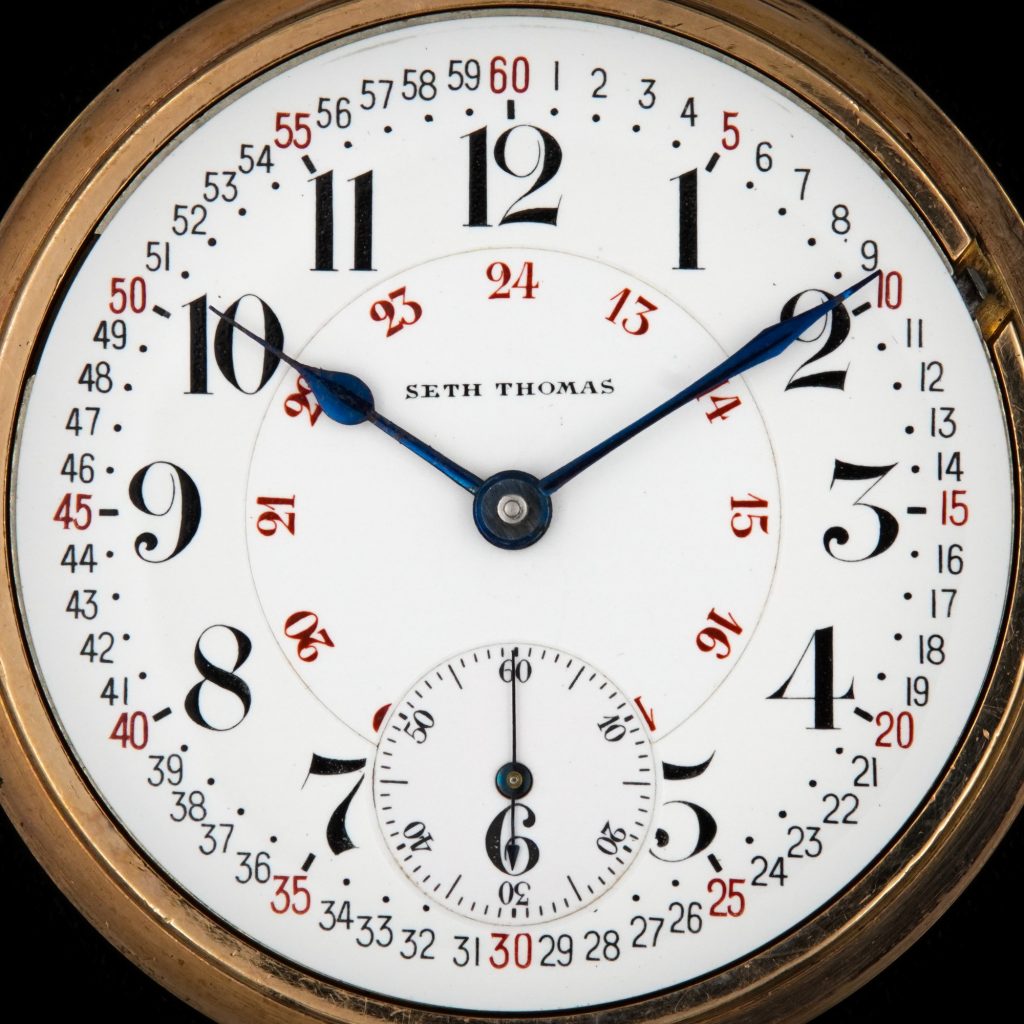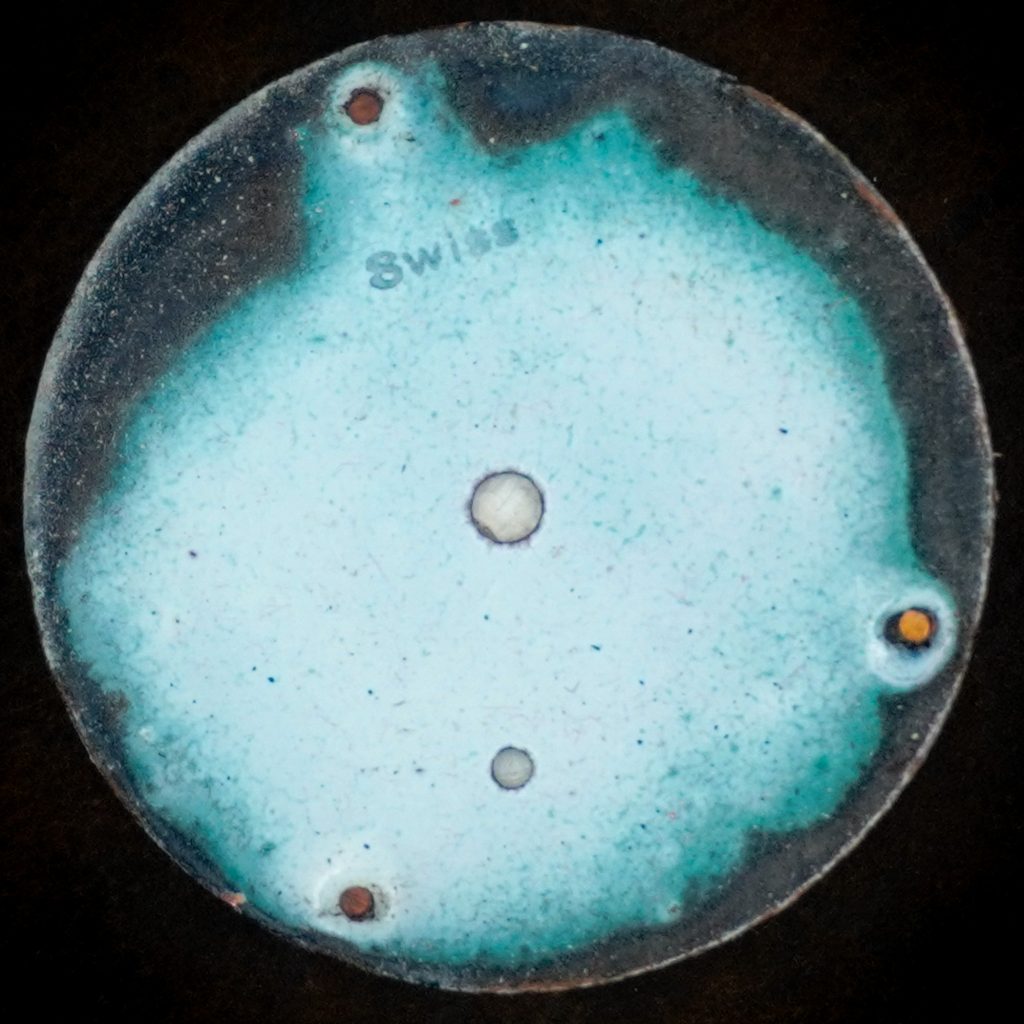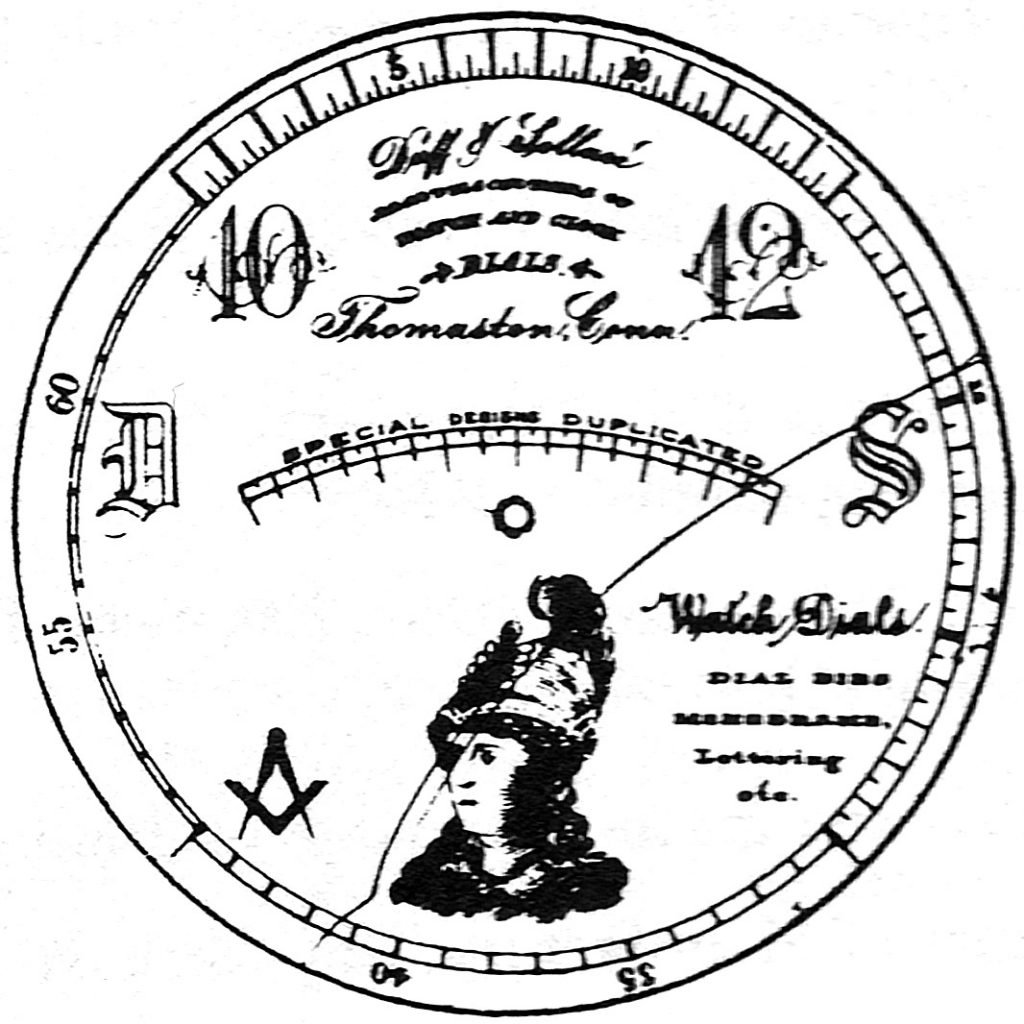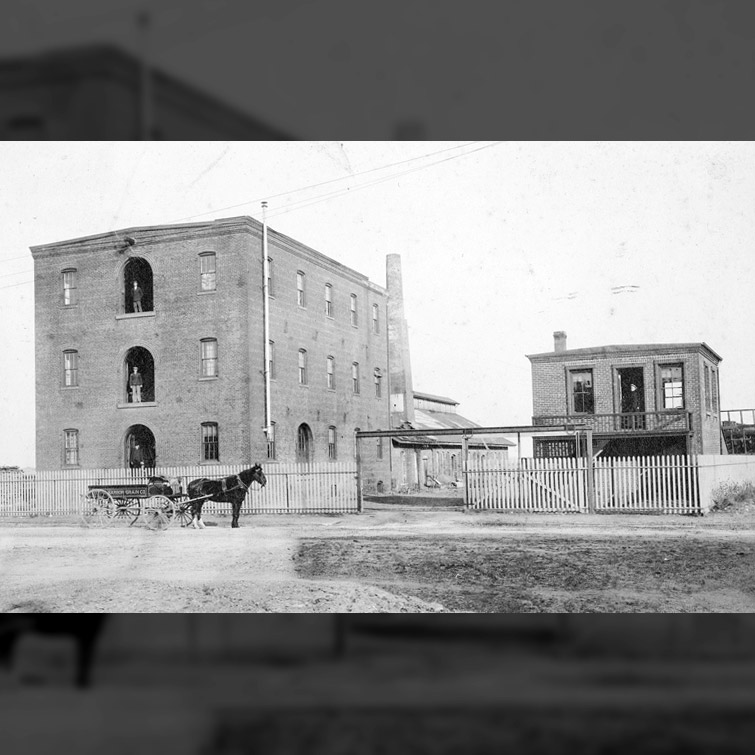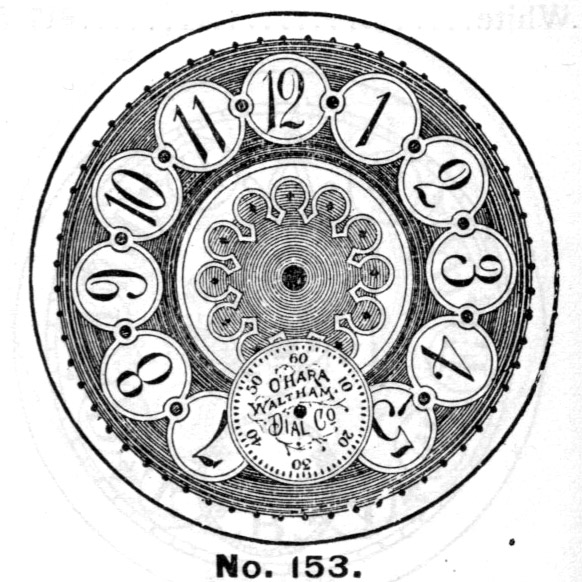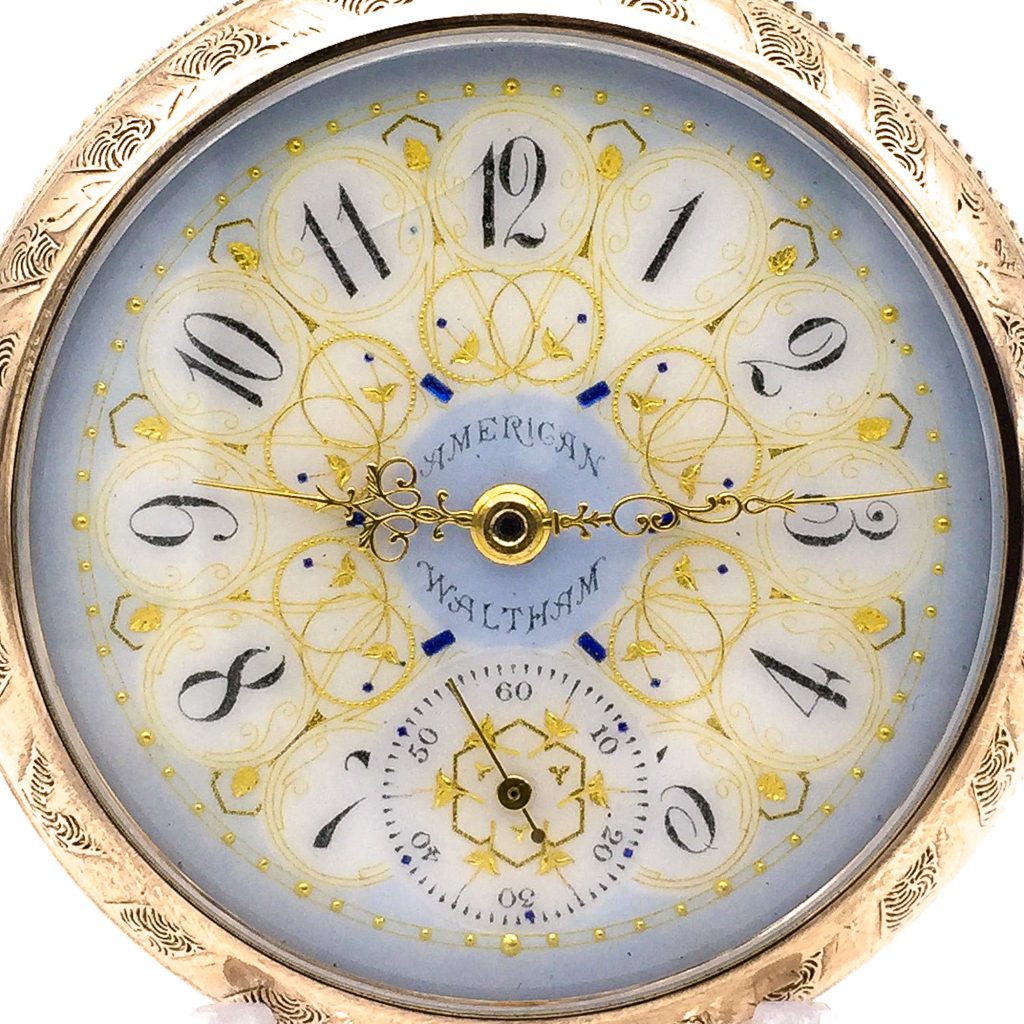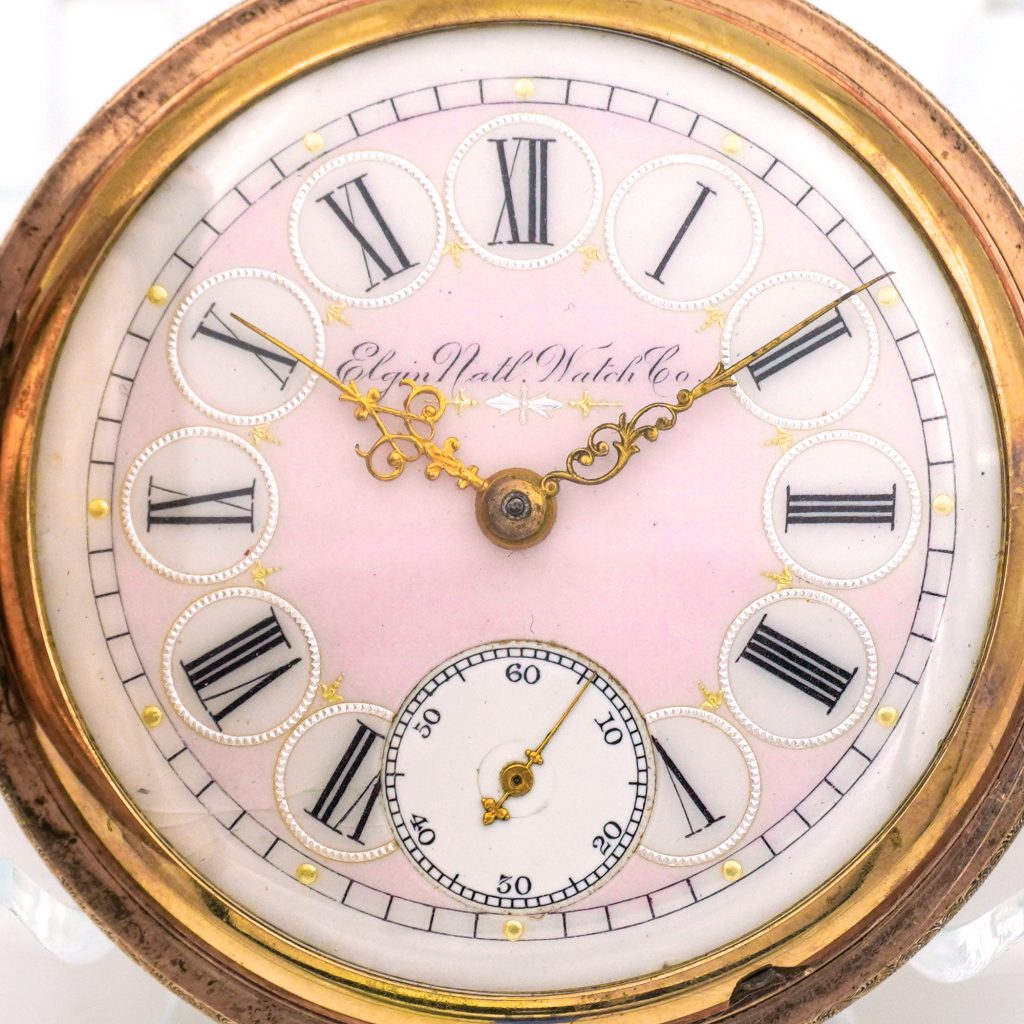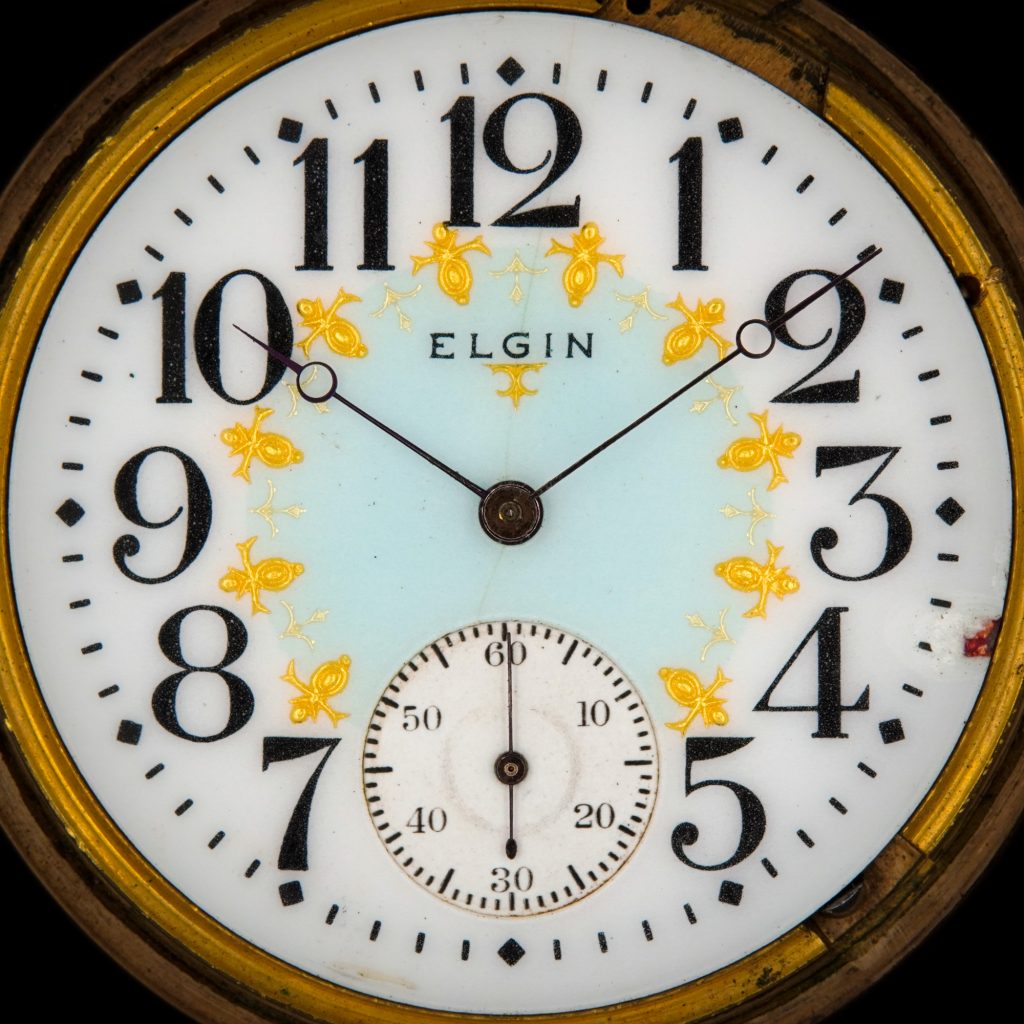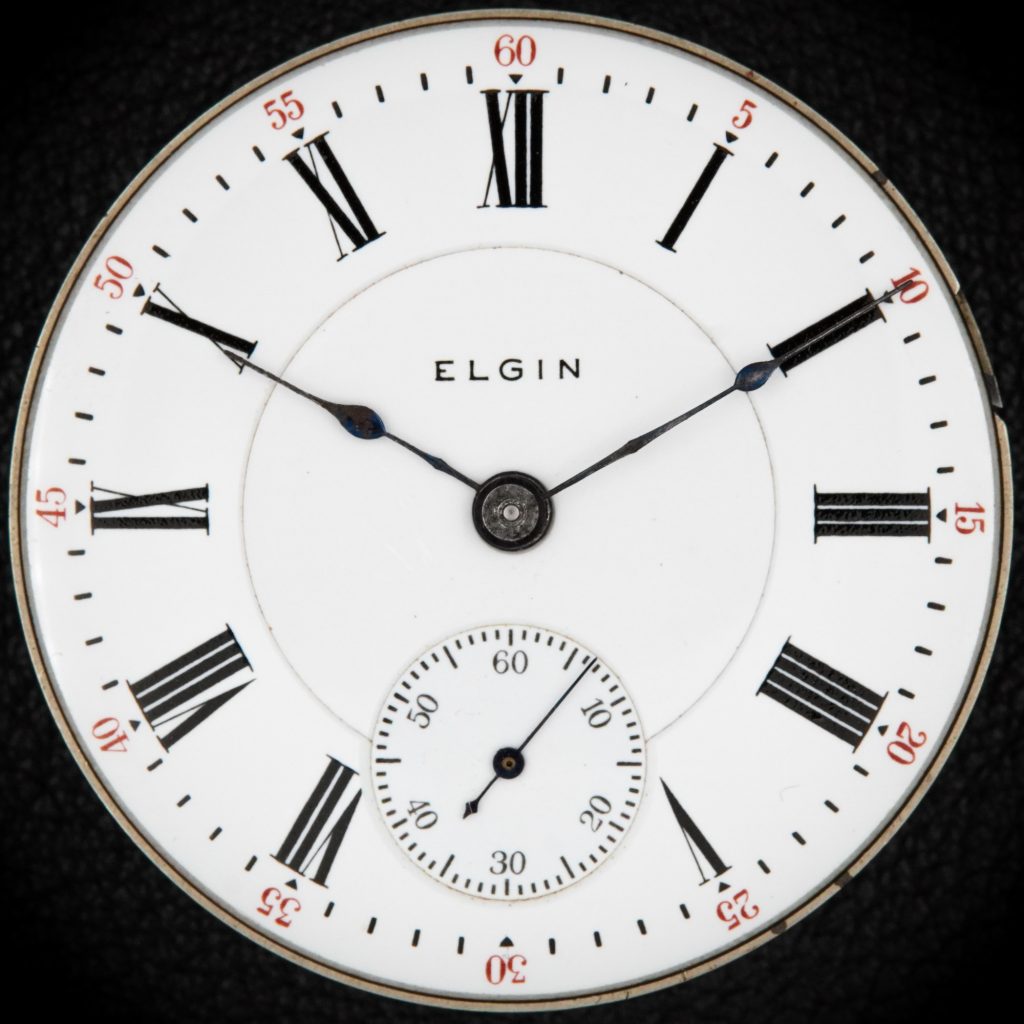Enamel Dial
Pictured: Duff & Sollace Dial Advertisement, c.1895 (Reproduced in Seth Thomas Watches, 1885-1915 by Chris H. Bailey). The Duff & Sollace Dial Company was organized November 19, 1895 in Thomaston,.
Pictured: The Eaton Dial Factory (2nd Floor of the Hampton Mills Building), c.1890s In March 1892, The Eaton Dial Manufacturing Company was organized with a capital stock of $7,000 at.
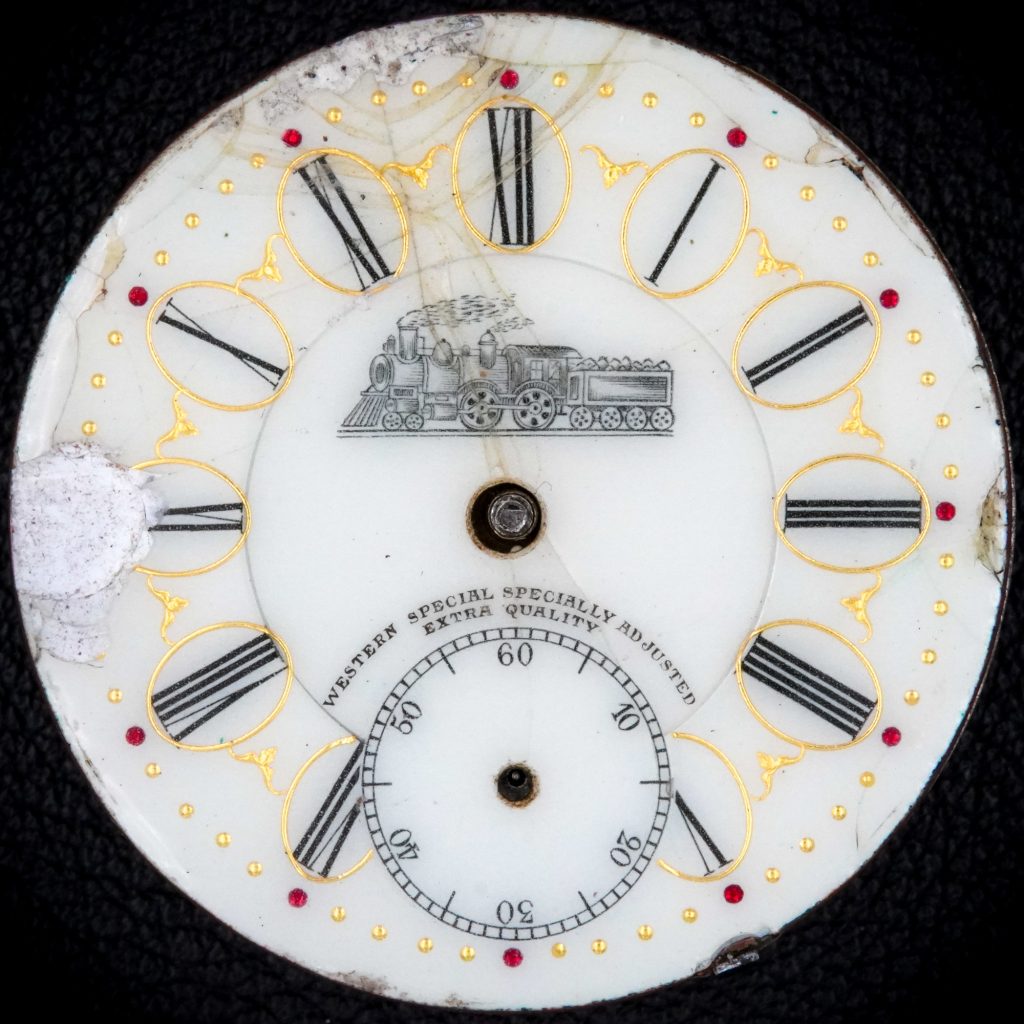
O'Hara Waltham Dial Co. No. 153 Shortly after Daniel O’Hara organized his dial manufacturing operation in the early 1890s, the O’Hara Waltham Dial Company quickly became the premier specialty dial.
Pictured: American Waltham Blue/Gold Fancy Dial (Unmarked, Considered to be an O’Hara Dial), c.1894. In 1890, the Waltham Dial Company was organized to satisfy the demand for fashionable “fancy dials.”.
Pictured: Elgin Colored Enamel Dial with Gold Embellishments, c.1880s. The 1880s proved to be a pivotal decade for the manufacturing of watch dials. Experimentation with different methods led to innovative.
Pictured: Elgin White Double-Sunk Enamel Dial, c.1900. The quartz watch is a relatively modern invention, allowing accurate timepieces to be produced inexpensively. However, the watchmaking industry was using quartz well.
